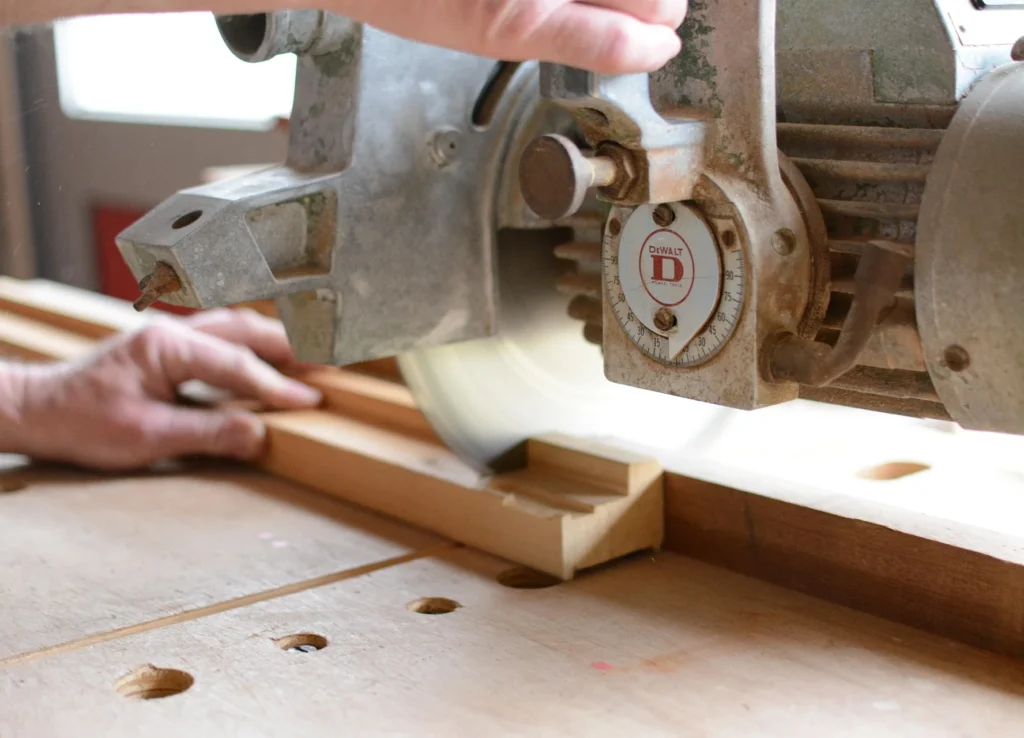Simple carpentry work
Temporary solutions and molds
Introduction to basic carpentry work
Simple carpentry work represents a fundamental area of craftsmanship and home improvement, where both beginners and experienced carpenters can find great benefit. The term refers to projects and tasks that are accessible to most people, regardless of experience level. Often these jobs involve a combination of basic techniques and more creative elements. Provisional solutions, often used in simple carpentry work, can be essential to achieve the desired results.
Temporary solutions refer to methods and constructions used temporarily to facilitate the workflow.

These approaches are particularly useful when carpenters face unexpected challenges during a project, such as wrong dimensions or lack of materials. By applying makeshift solutions, carpenters can quickly adapt and continue working without losing pace. Being able to improvise is an important skill, which also provides learning through practical experience.
Before starting a simple carpentry job, it is crucial to have a good understanding of the tools and materials required. Basic tools include different types of saws, hammers, screwdrivers and measuring tools. The skills to effectively use these tools are often crucial to ensure a successful end result. Common materials include wood, plywood and composite materials, each of which comes with its specific properties and uses. By understanding the materials and the functions of the tools, carpenters can better prepare for their projects.
Provisoriska lösningar och deras tillämpningar
In carpentry work, temporary solutions are essential to deal with unexpected situations that may arise during a project. These temporary measures allow craftsmen to continue work while ensuring structural integrity. Common examples of temporary solutions include cranes, props, and temporary brackets used to stabilize various components of a structure. Simpler carpentry work may often require such temporary solutions in order to properly evaluate and plan permanent installations.
Temporary support systems can be particularly useful in renovations where existing structures may not fully meet modern requirements. In these cases, temporary supports can support a wall or ceiling until more permanent solutions can be implemented. Using temporary solutions brings benefits such as increased safety and the ability to make adjustments before the final design is established. It can also save significant time and costs, allowing carpenters to explore alternative entrances or methods without risking damage or instability.
However, there are drawbacks to relying on temporary solutions. When used incorrectly, they can lead to unintentional injuries, and they can also increase the risk of accidents if proper safety protocols are not followed. It is crucial to determine when a temporary solution is appropriate and that it is used according to recommended guidelines. Finally, while temporary solutions can be a help in the moment, they should never replace carefully planned permanent installations, which are the foundation of sustainable carpentry work.
Want to start a project with us?
Get in touch today and we'll make your vision a reality. Contact us now, and together we will take the first step towards creating something amazing!
Casting Molds: Types and Uses
Molds play a crucial role in simple carpentry work, where they are used to create structures with precision and stability. Generally speaking, molds are a type of shape or structure that provides support and confines concrete or other materials during the curing process. These molds can be made in a variety of styles and sizes depending on the specific requirements of the project.
There are several types of molding molds, and the most commonly used include wooden molds, plastic molds, and metal molds. Wooden molds, which are often the most cost-effective option, are frequently used in simple carpentry work due to their ease of availability and adaptability. Plastic molds are also popular, especially for smaller projects, as they are lightweight and easy to handle. Metal molds are used for more robust constructions and are ideal for projects that require extra durability and long-term use.
The uses for molds are varied. They are primarily used to create foundations, walls, columns and even decorative elements. Furthermore, molds can be customized to produce specific patterns and textures, which adds a form of aesthetic value to carpentry work. For those who wish to experiment with creating their own molds, there are several tips to consider. Measuring carefully, choosing the right materials and being aware of the drying times of the concrete are crucial to ensuring that the final construction is both strong and durable.
Understanding different types of moldings and their uses can contribute to streamlining simple carpentry work and help the craftsman achieve desired results in their projects.
Conclusion and reflection
In conclusion, we have explored how simple carpentry tasks can be simplified through the use of makeshift solutions and moldings. These techniques and tools offer both novice and experienced carpenters the opportunity to experiment with their projects without having to invest a lot of time and resources. By understanding and implementing these practical methods, one can effectively handle a variety of carpentry tasks, from simple repairs to more complex constructions.
We have discussed how makeshift solutions are sometimes necessary to deal with sudden challenges in a project. Creating molds can also open doors to new design possibilities that may have previously seemed difficult to achieve. As you become more comfortable with these methods, your creativity will flow, and the results of your work can exceed expectations.
We encourage readers to not only apply the techniques we have detailed, but also to experiment with their own strategies in carpentry. Sharing their experiences, successes, and even setbacks can create a valuable community among carpenters, where ideas can be exchanged and new solutions can be developed. By constantly reflecting on their working methods and being open to improvements, carpenters, regardless of their level, can achieve greater efficiency and better results in their projects.
In conclusion, we emphasize the importance of embracing the process of simple carpentry as a constant learning experience. Whether making small adjustments or major changes, these methods can help make carpentry both more satisfying and more successful.



